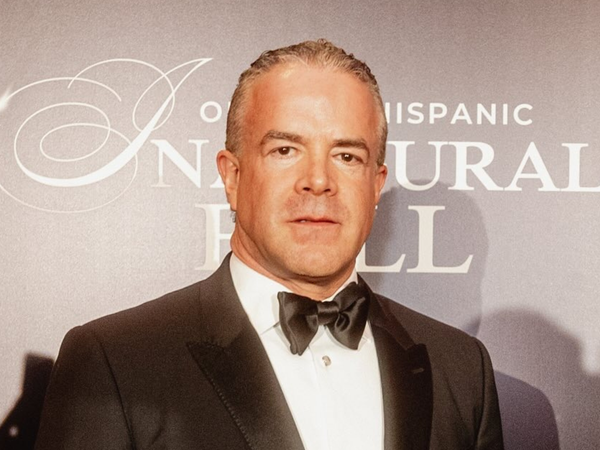
In the United States, it’s easy to assume that if something’s on grocery store shelves, it must be safe. But take a closer look at the ingredients list on your favorite snacks, sodas, and baked goods, and you’ll discover a surprising truth: some of the food additives considered “normal” here are outright banned in other parts of the world.
From bright artificial colors to chemicals used in plastics, many of these ingredients are outlawed in Europe, the UK, and other regions due to health concerns ranging from hyperactivity to cancer. Yet in the U.S., they’re still part of our daily diet.
So why the difference? The answer lies in how countries regulate food safety and in how profit-driven food industries influence what ends up on our plates. Here are six food additives that are legal in the U.S. but illegal in many other countries, and why you might want to think twice before consuming them.
6 Food Additives That Are Legal Here But Illegal Everywhere Else
1. Potassium Bromate: Banned in Europe, Still in Your Bread
Potassium bromate is a chemical additive commonly used in commercial baking to help dough rise and maintain its shape. It’s especially popular in mass-produced breads, rolls, and pizza crusts.
But there’s a catch: studies have shown that potassium bromate may be a potential carcinogen. It has been linked to kidney and thyroid tumors in animal studies, which led countries like the UK, Canada, and the European Union to ban it outright.
In the U.S., however, the FDA still allows its use, so long as final food products contain “no detectable levels.” But detecting trace amounts in real-world settings isn’t always guaranteed, especially when mass production is involved. That means you could be unknowingly eating a chemical that many other countries refuse to allow near their food supply.
2. BHA and BHT: Preserving Food and Controversy
Butylated hydroxyanisole (BHA) and butylated hydroxytoluene (BHT) are synthetic antioxidants used to preserve fats and oils in processed foods. You’ll often find them in breakfast cereals, chips, and snack foods to extend shelf life.
Although considered “generally recognized as safe” (GRAS) by the FDA, these additives have sparked serious concern abroad. BHA, in particular, has been identified as a possible human carcinogen by the International Agency for Research on Cancer. As a result, the European Union and Japan have restricted or banned their use in food.
Here in the U.S., they’re still widely used, and you probably eat them more often than you think. Check the label on your favorite snacks, and you might find them right there in the fine print.
3. Yellow #5 and Red #40: Artificial Colors With Real Risks
Artificial food dyes like Yellow #5 (tartrazine) and Red #40 are some of the most commonly used additives in the American food industry. They give everything from candies and cereals to sports drinks their vibrant, synthetic color.
But they come with baggage. Studies have linked these dyes to behavioral problems in children, including hyperactivity and attention issues. Some research has also raised concerns about allergic reactions and potential cancer risks with long-term exposure.
That’s why countries like Norway, Austria, and the United Kingdom have taken steps to ban or heavily restrict their use, often requiring warning labels when they’re used. The European Union, for instance, requires products with certain dyes to include the phrase, “may have an adverse effect on activity and attention in children.”
In the U.S., no such warnings are required, and manufacturers are free to use these dyes as they see fit. The result? Brightly colored snacks that may be doing more harm than good, especially to younger consumers.
4. rBGH (Recombinant Bovine Growth Hormone): More Milk, More Controversy
rBGH is a synthetic hormone injected into dairy cows to increase milk production. While this may seem efficient, it raises a number of ethical and health concerns.
Cows treated with rBGH often suffer from increased infections, particularly mastitis, which leads to more antibiotic use. Residues from both the hormone and the antibiotics can end up in the milk consumed by humans. Some studies have linked the consumption of milk from rBGH-treated cows to increased levels of insulin-like growth factor 1 (IGF-1), which has been associated with cancer risk.
Due to these concerns, rBGH is banned in the European Union, Canada, and several other countries. In contrast, the U.S. continues to allow its use, though many major dairy producers have voluntarily stopped using it in response to consumer pressure. Still, unless the milk you buy is explicitly labeled “rBGH-free,” there’s a good chance you’re consuming it without knowing.

5. Azodicarbonamide: Yoga Mats and Sandwich Buns
Azodicarbonamide (ADA) made headlines a few years ago when it was revealed that the chemical used in producing yoga mats was also being added to bread. Why? Because it acts as a dough conditioner, improving texture and shelf life.
While ADA is legal and used in hundreds of food products in the U.S., it’s banned in Europe and Australia due to health concerns. When heated during baking, ADA can break down into compounds linked to respiratory issues and, in some studies, cancer.
After the backlash, some U.S. chains (like Subway) removed ADA from their products, but it remains in use across the food industry. Unless you’re carefully reading bread and baked goods labels, you may still be ingesting this questionable chemical.
6. Brominated Vegetable Oil (BVO): The Soda Additive That Sticks Around
Brominated vegetable oil is used in citrus-flavored sodas and sports drinks to help keep flavorings evenly distributed. But this additive contains bromine, a chemical also found in flame retardants.
High doses of bromine have been linked to memory loss, skin irritation, and nerve problems. That’s why the European Union and Japan have banned BVO in food products.
While some U.S. beverage companies have voluntarily removed BVO, it’s still permitted by the FDA in limited quantities. If you’re sipping certain sodas or sports drinks, you could be getting more than just electrolytes. You might also be ingesting a compound banned in countries that take a stricter stance on food safety.
Why the U.S. Allows What Others Ban
So why are these additives allowed in the United States when so many other nations have outlawed them?
It comes down to regulatory philosophy. In many European countries, food safety regulations follow the precautionary principle, meaning that if an additive might be harmful, it’s restricted until proven safe. The U.S., on the other hand, tends to allow additives until they’re definitively proven dangerous.
There’s also the issue of industry influence. The U.S. food and chemical industries wield significant lobbying power, which can delay or prevent stricter regulations, even in the face of mounting scientific evidence.
As a result, consumers are often left to do their own homework and make informed choices without much help from regulators.
What You Can Do to Protect Yourself
You don’t need to become a chemist to avoid these questionable ingredients, but you do need to become a label reader. Look for certified organic products, which typically ban many of the additives listed above. Choose foods with short ingredient lists and recognizable names. Support companies that commit to cleaner, more transparent food manufacturing.
Awareness is your first line of defense. The more you know about what’s going into your food, the better equipped you’ll be to make decisions that protect your health and send a message to the companies producing what ends up on your plate.
Have you spotted any of these ingredients in your pantry? What steps do you take to avoid controversial food additives?
Read More:
Chemical in Popular Sweetener Damages DNA Leading to Leaky Gut







